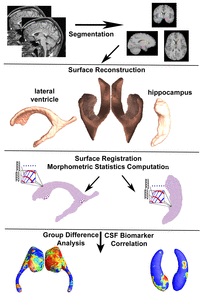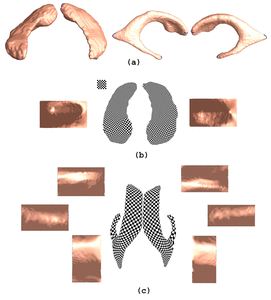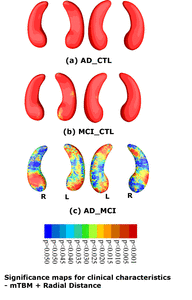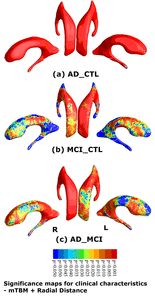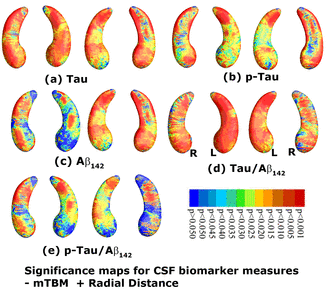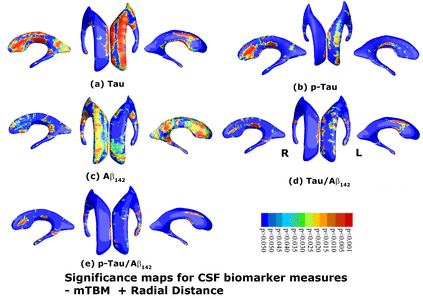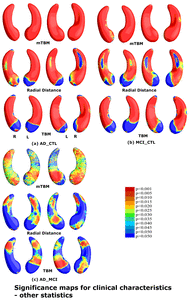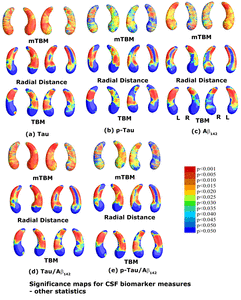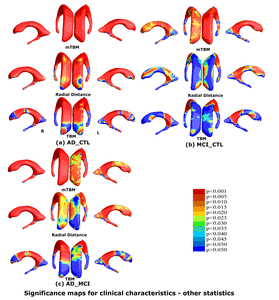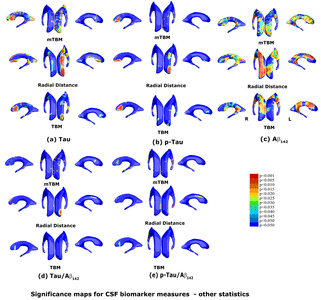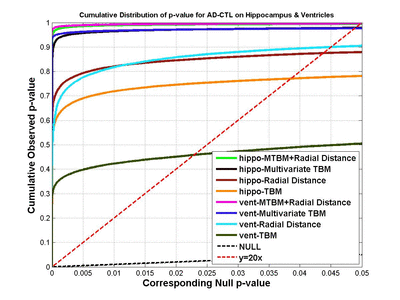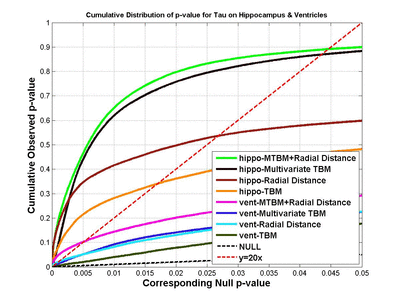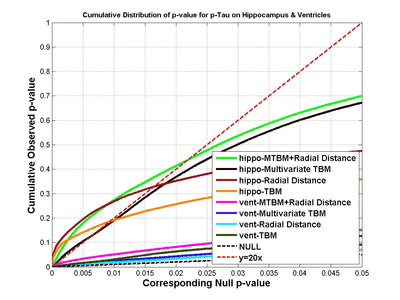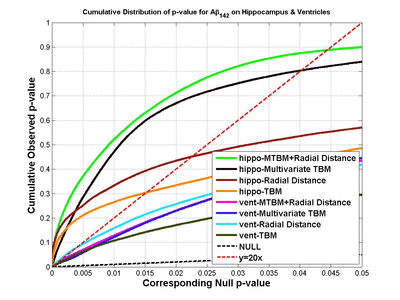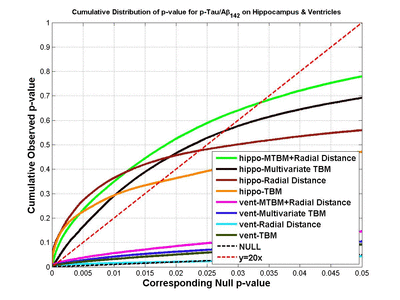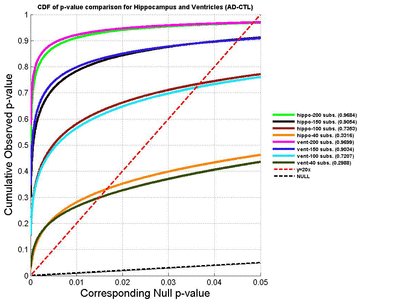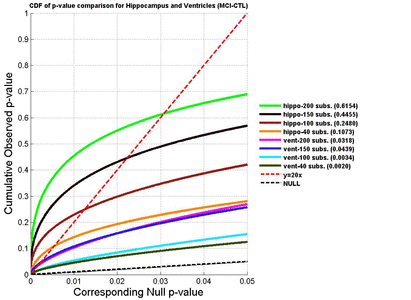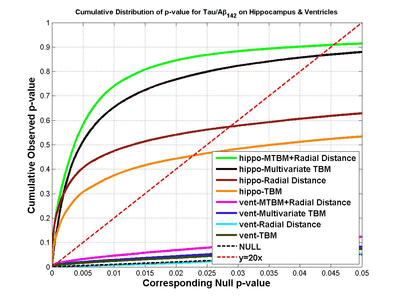Surface-Based TBM Boosts Power to Detect Disease Effects on the Brain: An N=804 ADNI Study
Yalin Wang, Yang Song, Priya Rajagopalan, Tuo An, Krystal Liu, Yi-Yu Chou, Boris Gutman, Arthur W. Toga, Paul M. Thompson and the Alzheimer’s Disease Neuroimaging Initiative (ADNI)
Abstract
Computational anatomy methods are now widely used in clinical neuroimaging to map the profile of disease effects on the brain and its clinical correlates. In Alzheimer’s disease (AD), many research groups have modeled localized changes in hippocampal and lateral ventricular surfaces, to provide candidate biomarkers of disease progression for drug trials. We combined the power of parametric surface modeling and tensor-based morphometry to study hippocampal differences associated with AD and mild cognitive impairment (MCI) in 490 subjects (97 AD, 245 MCI, 148 controls) and ventricular differences in 804 subjects scanned as part of the Alzheimer’s Disease Neuroimaging Initiative (ADNI; 184 AD, 391 MCI, 229 controls). We aimed to show that a new multivariate surface statistic based on multivariate tensor-based morphometry (mTBM) and radial distance provides a more powerful way to detect localized anatomical differences than conventional surface-based analysis. In our experiments, we studied correlations between hippocampal atrophy and ventricular enlargement and clinical measures and cerebrospinal fluid biomarkers. The new multivariate statistics gave better effect sizes for detecting morphometric differences, relative to other statistics including radial distance, analysis of the surface tensor and the Jacobian determinant. In empirical tests using false discovery rate curves, smaller sample sizes were needed to detect associations with diagnosis. The analysis pipeline is generic and automated. It may be applied to analyze other brain subcortical structures including the caudate nucleus and putamen. This publically available software may boost power for morphometric studies of subcortical structures in the brain.
Figures (click on each for a larger version):
Related Publications
- Wang Y, Song Y, Rajagopalan P, An T, Liu K, Chou Y, Gutman B, Toga AW, Thompson, PM, ADNI Group, “Surface-Based TBM Boosts Power to Detect Disease Effects on the Brain: An N=804 ADNI Study”, 17th Annual Meeting of the Organization for Human Brain Mapping. 2011: Quebec City, Canada. (This paper won a planetary talk)
- Wang Y, Song Y, Rajagopalan P, An T, Liu K, Chou Y, Gutman B, Toga AW, Thompson PM, ADNI Group, Surface-based TBM Boosts Power to Detect Disease Effects on the Brain: An N=804 ADNI Study, NeuroImage, 56(4), June 2011, pp. 1993-2010
